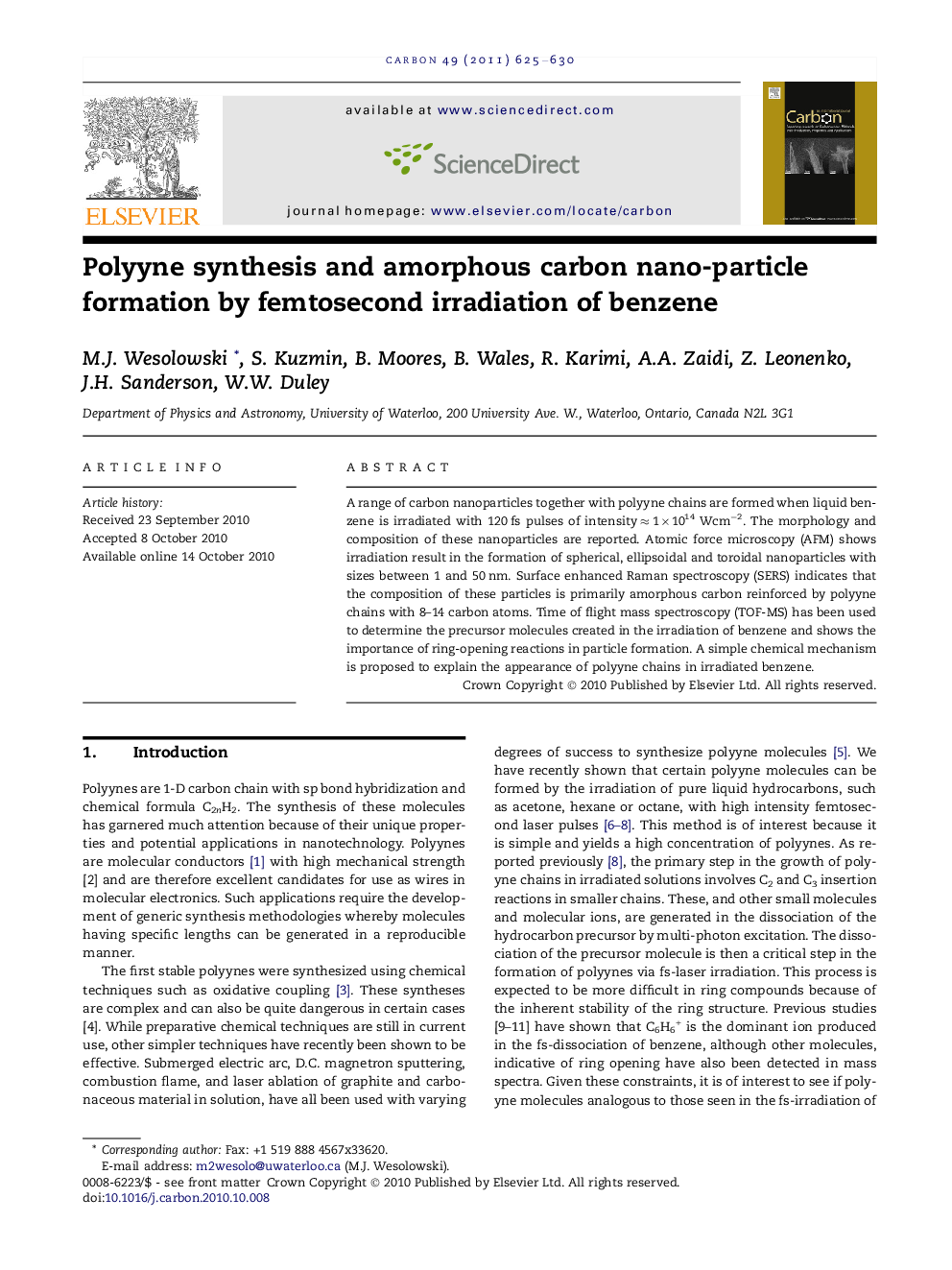| کد مقاله | کد نشریه | سال انتشار | مقاله انگلیسی | نسخه تمام متن |
|---|---|---|---|---|
| 1415728 | 985934 | 2011 | 6 صفحه PDF | دانلود رایگان |

A range of carbon nanoparticles together with polyyne chains are formed when liquid benzene is irradiated with 120 fs pulses of intensity ≈ 1 × 1014 Wcm−2. The morphology and composition of these nanoparticles are reported. Atomic force microscopy (AFM) shows irradiation result in the formation of spherical, ellipsoidal and toroidal nanoparticles with sizes between 1 and 50 nm. Surface enhanced Raman spectroscopy (SERS) indicates that the composition of these particles is primarily amorphous carbon reinforced by polyyne chains with 8–14 carbon atoms. Time of flight mass spectroscopy (TOF-MS) has been used to determine the precursor molecules created in the irradiation of benzene and shows the importance of ring-opening reactions in particle formation. A simple chemical mechanism is proposed to explain the appearance of polyyne chains in irradiated benzene.
A range of carbon nanoparticles together with polyyne chains are formed when liquid benzene is irradiated with fs-laser pulses. These particles are amorphous, likely having an (sp, sp2)-bonded rather than the (sp3, sp2)-bonded structure.Figure optionsDownload as PowerPoint slideResearch highlights
► Irradiation of liquid benzene by fs-laser pulses causes formation of nanoparticles.
► Spherical, prolate and toroidal nanoparticles are created (1–50 nm).
► Particles are amorphous and composed of carbyne and sp2 carbon.
► Created by dissociation of benzene and subsequent product reactions.
Journal: Carbon - Volume 49, Issue 2, February 2011, Pages 625–630